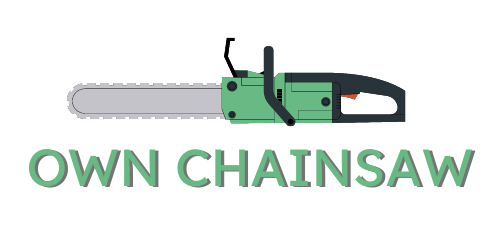Uh oh! You just bought a chainsaw and you can’t get it to cut straight. Don’t worry, you’re not alone. We’ve all been there!
It’s frustrating when something you just bought doesn’t work the way it should. After all, you just want to get the job done, but now you’ve got a chainsaw that won’t cooperate.
It could be several things that are causing your chainsaw to not cut straight. It could be a loose chain, a chain not sharpened properly, or a worn-out groove.
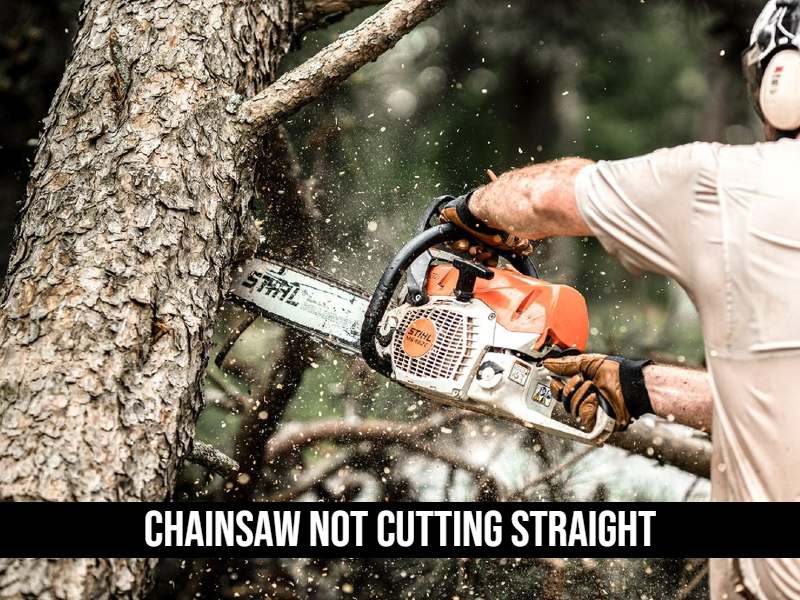
Whatever the cause, we’ve got your back! We’ll break down each of these potential causes with step-by-step instructions to help you get back to cutting like a pro.
So don’t fret – we’re here to help you get your chainsaw back in shape and cutting straight again!
Why Your Chainsaw Is Not Cutting Straight? (7 Causes + Solutions!)
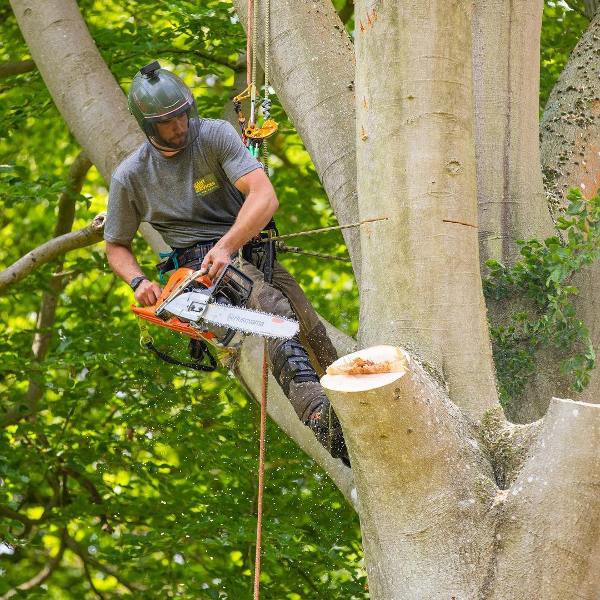
If you’re a chainsaw enthusiast, you know how important it is to have a sharp, well-maintained saw that cuts straight. That’s why it can be so frustrating when your chainsaw isn’t cutting straight, no matter how hard you try.
Despite the rarity of deadly chainsaw accidents, improper cutting can result in tragic accidents, so make sure your chainsaw is working properly to avoid any mishaps.
So, what could be causing this problem? Here are some reasons why your chainsaw is not cutting straight:
1. Chain is not sharpened properly
The primary reason for a chainsaw not cutting straight is that it is not properly sharpened. A chainsaw chain needs to be sharpened regularly to maintain its effectiveness in cutting. If the sharpening is done incorrectly, it can result in an uneven chain.
This can be caused by sharpening one side of the chain more than the other, leading to a draw on the chain. As a result, the chain will pull on one side, and the cut will curve.
Additionally, the chain links and cutter teeth may be damaged if the chain encounters a rock or other hard object while in motion.
Solution:
It is important to first inspect cutter teeth and chain links to identify any possible problems. To ensure the chain is sharpened correctly, a thin line should be visible on each cutter tooth, which allows for comparison of the heights of the teeth.
If no issues are detected, the following steps can be taken to correctly sharpen the chain:
1. Gather the required tools.
2. Adjust the chainsaw bar to the correct tension.
3. File the cutter teeth and depth gauge to the correct size.
4. Sharpen the chain with a round file until they are the same height.
5. File the depth gauge until it is the same height as the cutter teeth.
6. Check the chain for sharpness.
Following these steps will ensure that the chainsaw chain is correctly sharpened and that the cut is straight and precise.
2. Loose Chain
If you’re having trouble cutting straight lines with your chainsaw, it can be due to the chainsaw’s loose chain.
A loose chain will make the chainsaw cut at an angle, making it difficult to achieve the desired results. The loose chain can also cause the chainsaw to vibrate excessively and make the job more difficult and dangerous.
Chain tension is incredibly important for using a chainsaw safely and efficiently. When the chain is too loose, it causes extra friction which can make the saw harder to handle and also causes the chain to slip and turn over, making it impossible to cut straight.
If the chain isn’t properly tensioned, it won’t cut straight, and it can also cause extra wear and tear on the bar and chain.
Solution:
The modern chainsaw usually has a tension adjustment mechanism that allows you to tighten the chain around the bar. To do this, locate the tension adjustment screw and adjust it to the desired level. If the chain is still sagging, you might need to split it up and cut out a few links to make it shorter.
The tension can also be tightened using a chain-tightening tool. This tool has a hook that you attach to the chain and then you can use a lever to tension the chain as needed. You can also use a hammer to hit the chain links and make them fit better.
Be sure to remember to keep the chain tension at the right level and regularly check it to make sure it is not too loose or too tight.
The saw may not cut straight if the chain tension is incorrect. Make sure to read the manual carefully to learn more about the correct chain tension for your model.
3. Thin Chain width
When it comes to chainsaws and their performance, the width of the chain plays a crucial role. The chain width, or how thick the chain is, has a direct effect on how efficiently the chainsaw cuts. If it is too thin, it may be cross-cut rather than cut straight.
To understand what causes the saw angle cuts, we need to understand how the chain and bar work together. The chain is composed of tiny teeth that interlock with the grooves in the bar.
Chains that are too thin won’t fit snugly into the groove, which can lead to chain wobbling in the groove. This results in the saw cutting at an angle, instead of a straight line.
Solution:
You can solve this problem by making sure your chain is the right thickness. Start by examining the chain to determine if it is too thin.
A good way to do this is to hold the chain sideways and see if it moves freely. If it wobbles back and forth, then the chain is likely too thin.
Once you have determined that the chain is too thin, you will need to find a chain that fits the bar properly. You can find this information in your chainsaw’s owner’s manual, which will tell you the thickness of the groove.
Most chainsaw bars use 5/8th-inch-thick chains. To check the thickness of your chain, you can measure it with a steel ruler. If it is less than 5/8ths of an inch, then you need to get a thicker chain.
4. Worn-out bar groove
When using a chainsaw, cutting straight requires the proper width of the chain and a straight guide bar. However, it’s not unusual for the guide bar to become worn out from use, resulting in an uneven bar rail.
This means that the width of the groove in the bar increases gradually from its initial width, which causes the chain to wiggle in the groove as it cuts, causing uneven cutting.
This typically occurs as a result of the bar being repeatedly hit while cutting and is more likely to happen if the lower side of the bar is the one that makes contact with the wood.
Solution:
The most effective solution to this problem is to remount the chain on the bar after flipping it over so that the side of the bar that has worn down less is now on the lower side.
Once the chain is remounted, you can then check to see if the chain still wiggles in the groove by running it along the bar and observing how it fits. If necessary, you can use a file and sandpaper to further smooth out the groove.
In addition, it’s important to regularly inspect it for wear and tear. If you notice any signs of wear, such as deep grooves or nicks, then it’s best to replace the bar and chain to maintain optimal cutting performance.
Lastly, be sure to keep the guide bar and chain clean and lubricated, as this will help to prevent uneven wear and promote longer life for your chainsaw.
5. Old or worn-out chainsaw bar
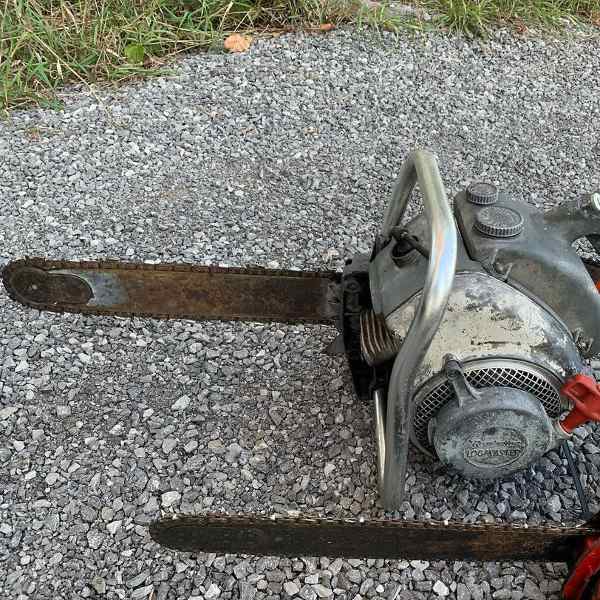
One of the most common reasons why a chainsaw is not cutting straight is due to a worn-out or bent chainsaw bar. Chainsaw bars are made of metal and can become worn down due to regular use and exposure to the elements.
This may lead to an uneven cut when chainsawing. Other causes of an uneven cut include an incorrect angle of cutting, a dull saw chain, and incorrect tension on the cutting bar.
Solution:
If you find that the chainsaw does not cut straight, first check the condition of the chainsaw bar. If it becomes worn down or bent, it should be replaced. To ensure that the cutting bar is correctly tensioned and at the correct angle, you should also check the angle of the cut.
If the saw chain is dull, it should also be replaced. Additionally, proper maintenance and sharpening of the saw chain can help to prevent future uneven cuts.
6. Uneven Bar’s rails
The rails on a chainsaw bar are the two edges that make up its groove. The chain is kept vertical by these rails, which also support it on both sides.
As a result of wear and tear, one rail may eventually rise above the other. When this happens, the chain will naturally angle and rest on the bottom rail, resulting in an uneven cut.
Solution:
To resolve this issue, it is necessary to inspect the bar rails and grind any uneven ones. To make both rails even, use a powered grinder to remove excess metal from the higher rail if the rails appear uneven.
As well, rails should be regularly checked for signs of wear and tear, and any unevenness should be corrected right away.
7. Operator Error
One of the main reasons why chainsaws may not cut straight is due to operator error. This could include the operator not holding the saw properly, not following the correct cutting technique, or not allowing the saw to reach full speed before beginning the cut.
In addition, the operator may be using a dull or damaged chain, which can cause the saw to cut crookedly.
Solution:
Education and experience are the best remedies for operator error. Chainsaw operators should be fully trained and follow the manufacturer’s instructions when using a chainsaw.
Taking breaks as necessary to ensure proper chainsaw use is as important as being aware of fatigue levels.
Last but not least, chainsaws should be properly maintained to ensure their efficiency and accuracy. Regular maintenance can help cut down on operator error and ensures that the chainsaw is being used correctly.
Can you straighten a chainsaw bar?
Straightening a chainsaw bar requires the right tools, technique, and patience. The first step is to determine what type of bar you are dealing with, either a solid bar or a laminated bar.
For solid bars composed of a single steel sheet, the process will begin by placing the bar in a press, and then hammering the bar. Any bends or warps will be straightened out.
It is recommended that you use a bar cleaner handle to smooth out the edges of the bar after it has been hammered, ensuring that it is completely straight.
In the case of laminated bars, which are made up of thin steel sheets welded or riveted together, straightening may be more challenging.
To help protect the delicate surface of the bar, you should use rubber padding while hammering it. This will help avoid unnecessary damage as you hammer out any warps or bends.
How can I tell if a chainsaw isn’t cutting straight?
You can tell if there is a problem with the chainsaw by looking at the cut it produces. A straight cut should have a smooth edge and should be the same width on both sides. If the cut is ragged, has a curved edge, or is wider on one side than the other, it is not straight.
Over To You!
Chainsaw not cutting straight can be a result of several issues. Dull blades, improper chain tension, or an unbalanced chain can all cause the chainsaw to cut unevenly.
If the chainsaw is not cutting straight, these potential causes should be examined to identify and address the issue. Regular maintenance of the chainsaw and its blades is also important for ensuring proper cutting performance.
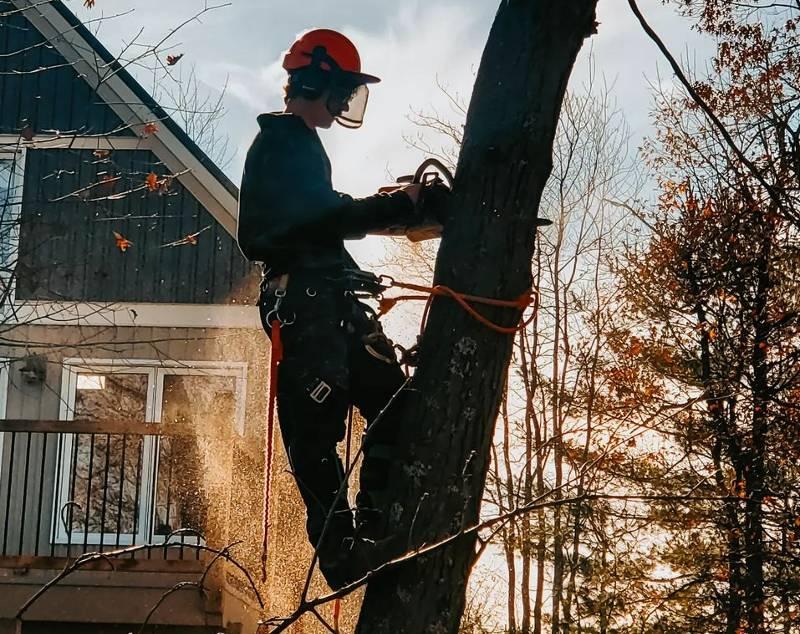
I am Senior Editor and CEO and I have been a chainsaw enthusiast for over 12 years. As a passionate chainsaw enthusiast, I have got a wealth of knowledge and experience with chainsaws, and I am constantly striving to expand my expertise and knowledge. Read More!
